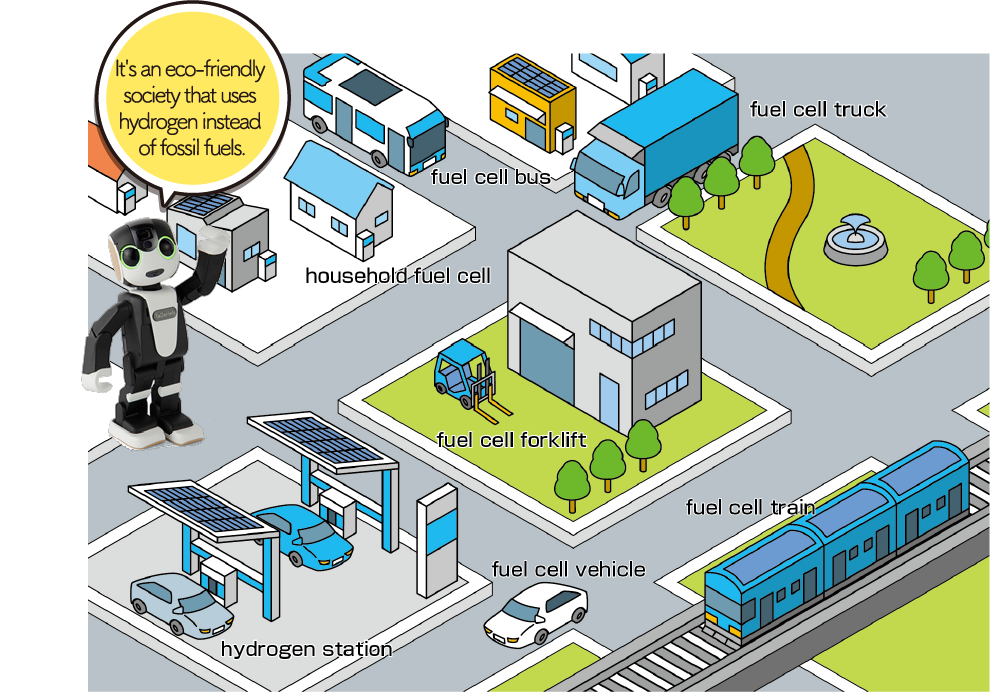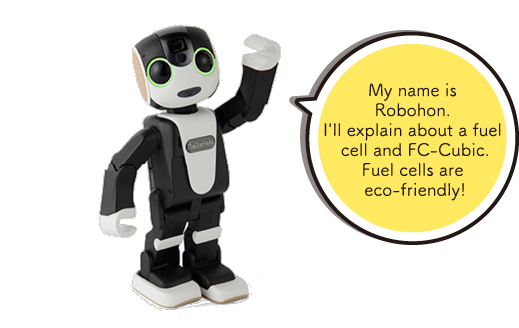
I’ll explain how a typical fuel cell works.A fuel cell is a device that chemically reacts hydrogen and oxygen to extract energy as electricity.Oxygen and hydrogen react at the positive and negative poles of batteries, respectively.At the minus pole, hydrogen atoms are decomposed into hydrogen ions and electrons.The electrons are extracted as electrical energy and returned to the positive pole.Hydrogen ions move to the positive pole through a special film called an electrolyte.Then, at the plus pole, oxygen atoms, the hydrogen ions and the electrons react to form water.In other words, after using electricity, only water comes out.Unlike extracting energy from fossil fuels like gasoline, it produces no greenhouse gases (such as carbon dioxide) or air pollutants.
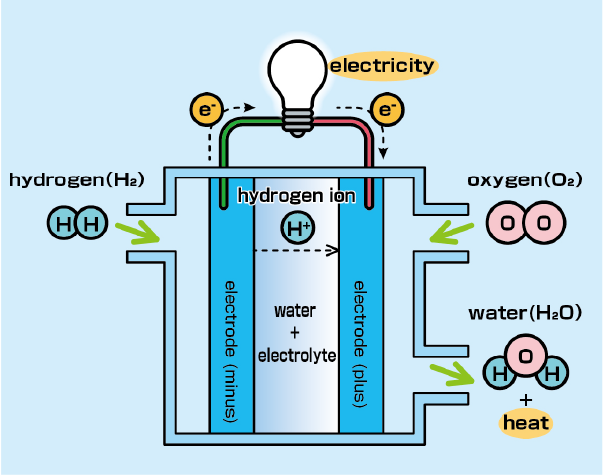

According to the type of the electrolyte between the negative and positive electrodes, fuel cells are classified into four types: solid polymer, solid oxide, phosphoric acid, and molten carbonate.The polymer electrolyte fuel cell which uses polymer membranes is especially getting a lot of attention now.The polymer electrolyte fuel cell (PEFC) is characterized by high power generation efficiency, low operating temperature, and light weight and compact size.Thanks to these characteristics, PEFC is easy to use in our daily lives and is used for fuel cell vehicles and household power supplies.As fuel cell vehicles, TOYOTA’s MIRAI and HONDA’s CLARITY are actually running on the road.Have you ever seen them?Panasonic’s ENE・FARM, which is a home power supply, makes our home electricity.
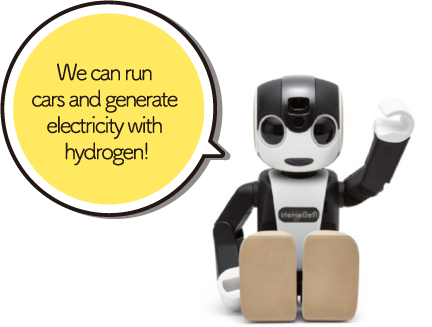
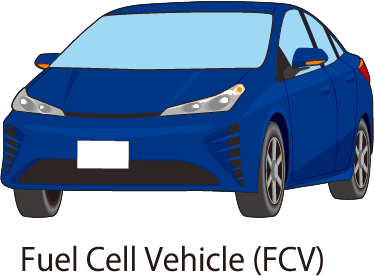
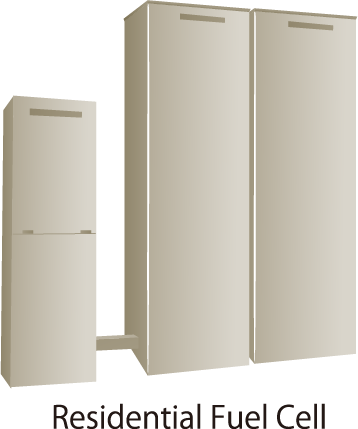
The principle of power generation in the Polymer Electrolyte Fuel Cell (PEFC) is the same as the mechanism of fuel cells described above.I will briefly explain the actual structure of PEFC.In the PEFC structure, catalyst layers, gas diffusion layers and separators are superimposed on both sides of the polymer electrolyte membrane.Hydrogen is flowing through the left separator and oxygen is flowing through the right separator.The electrolyte of PEFC is made of a polymer, and it plays the role of passing hydrogen ions from the negative pole to the positive pole.The catalyst layer mainly consists of catalysts for hydrogen and oxygen to react and of carbon powder.There are many small catalysts, that are invisible to the human eye, on the carbon particles.These little catalysts are platinum.Platinum is expensive, and the amount of it produced in the world is very small.The gas diffusion layer is made of very thin threads of carbon, making it easier to transport hydrogen and oxygen to the catalyst layer.Each layer has an important role.
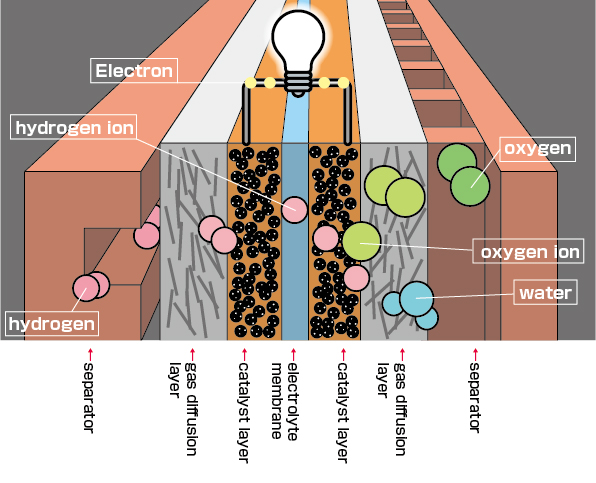

The issue with PEFC is price and duration.The catalyst is expensive because it uses a lot of precious platinum.Also, PEFC is expected to be used for over 10 years as it is used for electric power of cars and houses, but it loses power after using it for a long time.My friends at FC-Cubic are studying PEFC to solve these issues.How can we reduce the amount of precious platinum while keeping the power?Why does it lose the power when it is used for a long time?They are studying with university researchers and fuel cell companies to find issues and new ways to solve them.The people at FC-Cubic are studying hard today to aim to realize the hydrogen economy where everyone can use fuel cells in the not-so-distant future.
